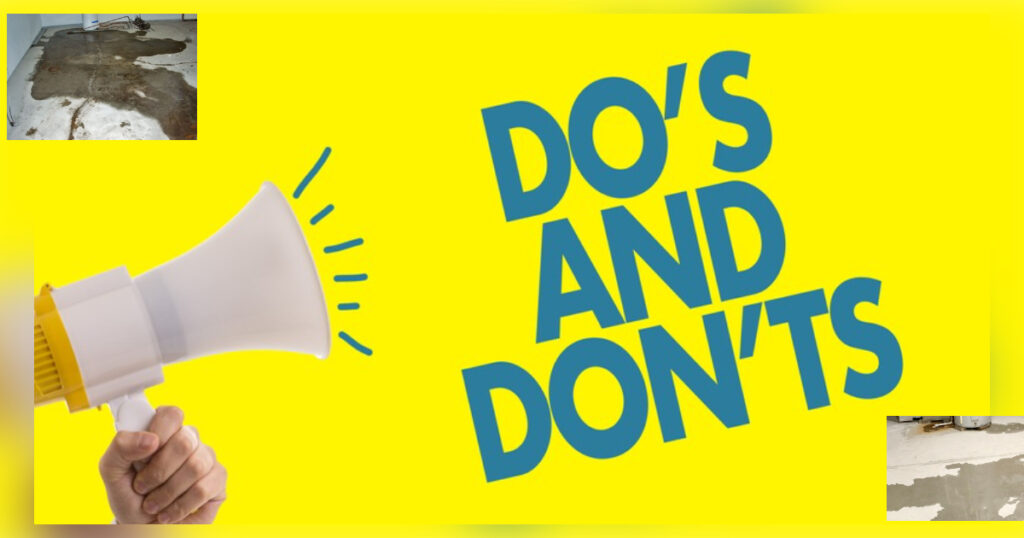
Learn essential do’s and don’ts for DIY slab leak detection. From visual inspections to embracing smart tech, empower yourself to safeguard your home’s foundation with proactive measures.
Discovering a slab leak early can save your home from extensive damage. This guide outlines crucial do’s and don’ts, providing homeowners with the knowledge to master DIY slab leak detection.
1. Regular Visual Inspections:
Regular visual inspections of your home’s interior and exterior are crucial for early slab leak detection. Look for subtle signs such as discoloration, dampness, or unusual spots on walls and floors. By catching these visual cues early, you can prevent minor leaks from turning into major structural issues.
Inspect areas around appliances, plumbing fixtures, and water-related appliances. Pay close attention to areas near the foundation, as slab leaks often manifest themselves through subtle but persistent dampness. Regular visual checks create awareness of potential problems and empower homeowners to take proactive measures before significant damage occurs.
2. Don’t Ignore Unexplained Water Bills:
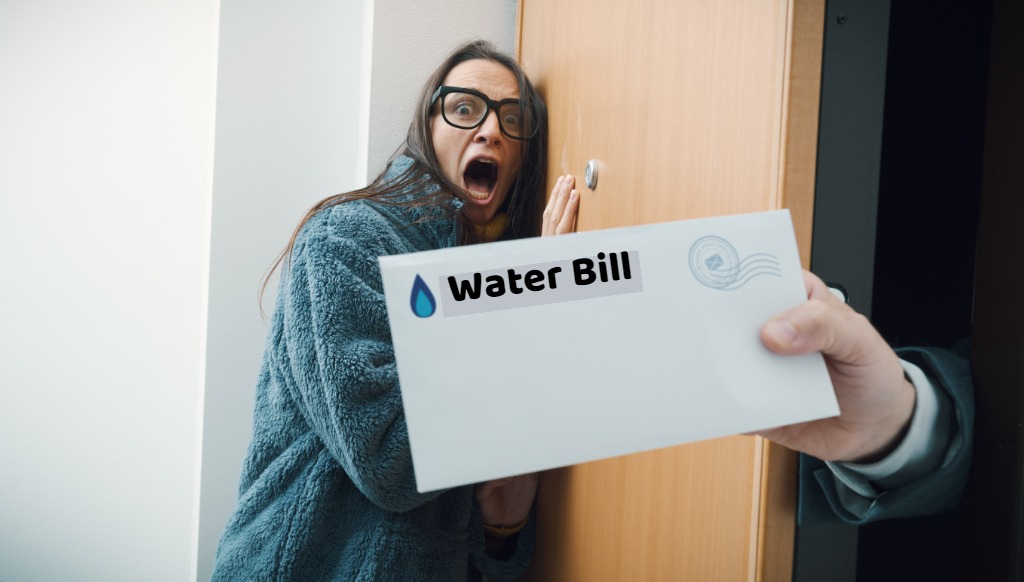
Your water bill serves as a valuable indicator of potential slab leaks. If you notice a sudden and unexplained increase in water consumption, it’s crucial not to ignore it. Water bills reflect the overall health of your plumbing system, and a spike could be a red flag signaling an underlying issue.
Ignoring an unexplained rise in water bills might lead to prolonged leaks, resulting in not only financial losses but also potential damage to the foundation and surrounding structures. Prompt investigation and action are key to mitigating the impact of a slab leak on your home and budget.
3. Listen for Unusual Sounds:
Listening for unusual sounds within your home can be an effective DIY method for detecting slab leaks. The sound of running water or hissing may indicate a leak concealed within the slab. Take the time to turn off all appliances and sources of noise, creating a quiet environment that allows you to tune in to these subtle auditory cues.
By actively listening for these sounds, you become a detective in your own home, honing in on potential problem areas. Unusual sounds can be an early warning sign, prompting you to investigate further and potentially identify the location of a slab leak before it causes significant damage.
4. Don’t Skip Water Meter Checks:
The water meter is a valuable tool in DIY slab leak detection. Skipping water meter checks is akin to overlooking a detective’s primary investigative tool. When all water sources in your home are turned off, a properly functioning water meter should remain stationary. Any movement in the meter’s reading signals a potential leak.
Performing regular water meter checks provides a baseline understanding of your water usage patterns. Sudden fluctuations or continuous movement when water usage is supposedly zero can alert you to a hidden issue. By integrating this simple yet effective method into your routine, you become adept at spotting irregularities that may indicate a slab leak.
5. Monitor Hot Spots on Flooring:
Hot spots on flooring are not only uncomfortable for bare feet but can also signify issues with your plumbing system. This do encourages homeowners to actively monitor the temperature of their flooring, especially when suspecting a slab leak in a hot water line.
Localized warmth on the floor might indicate the presence of a leak, as hot water escapes and influences the immediate surroundings. This proactive approach allows you to pinpoint potential problem areas before they escalate. Monitoring hot spots is a tactile method that engages your senses in the detection process, making you more attuned to subtle changes.
6. Don’t Disregard Mold or Mildew:
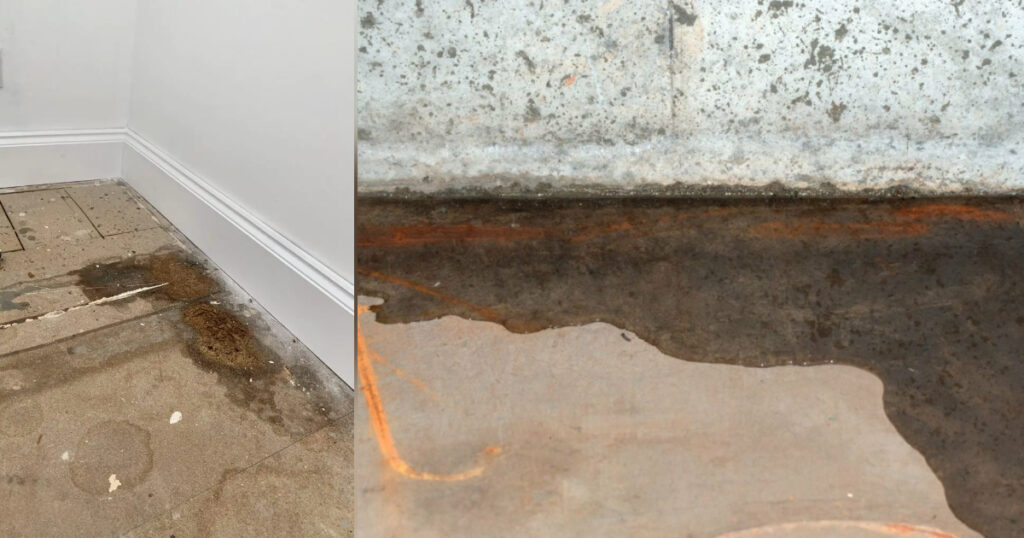
Mold and mildew growth are not merely aesthetic concerns; they often point to underlying moisture issues. Disregarding these signs can have severe consequences, particularly when it comes to slab leaks. Mold thrives in damp environments, and a slab leak provides the perfect conditions for its proliferation.
Addressing mold and mildew promptly is essential for maintaining a healthy living environment. It’s not just about cosmetic concerns; it’s about preventing potential health hazards associated with prolonged exposure to mold. By not disregarding these visible indicators, homeowners can take early action to investigate and address the root cause of the moisture, potentially preventing further damage.
7. Perform Pressure Tests:
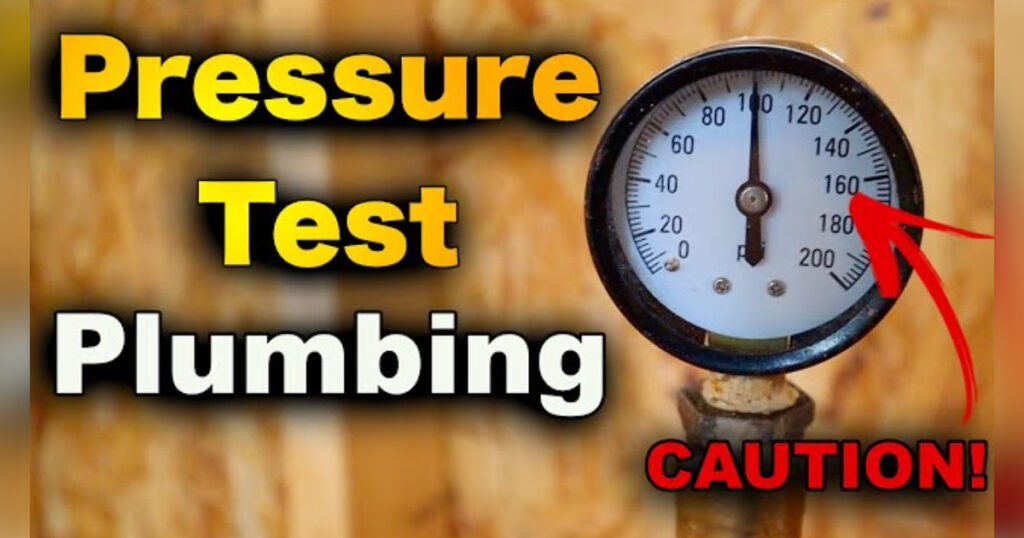
Conducting pressure tests on your plumbing system is a proactive measure to identify leaks before they become catastrophic. This do emphasizes the importance of regular pressure tests as part of your DIY slab leak detection toolkit. By understanding how to perform these tests, you gain insight into the integrity of your water supply system.
Pressure tests involve pressurizing the plumbing system and monitoring for any drop in pressure, which would indicate a leak. Regularly incorporating this DIY method allows you to catch leaks early on, preventing potential damage to your home’s foundation. It’s an empowering practice that puts homeowners in control of their plumbing system’s health.
8. Don’t Delay Repairs:
Delaying repairs once a slab leak is detected is a critical don’t in the realm of DIY leak detection. Once you’ve identified a leak, prompt action is imperative to mitigate the extent of damage. Delaying repairs can lead to further deterioration of the foundation, potential mold growth, and increased repair costs.
The moment a slab leak is confirmed, it’s essential to consult with a professional plumber or contractor to assess the extent of the damage and determine the most appropriate course of action. Prompt repairs not only safeguard your home but also your investment. Procrastination can turn a manageable issue into a full-blown crisis, emphasizing the urgency of addressing slab leaks promptly.
9. Do Check Underneath Flooring:
Lifting flooring to inspect underneath is a proactive measure that delves into the heart of potential slab leaks. This action involves carefully examining the subfloor for any signs of moisture, water stains, or structural irregularities. By directly addressing the source of the problem, homeowners can identify hidden leaks that might otherwise go unnoticed.
Checking underneath flooring requires a cautious approach to prevent further damage. If you notice any anomalies or suspect a slab leak, this recommendation encourages you to explore beneath the surface. It’s a hands-on method that allows for a more comprehensive examination, contributing to thorough DIY detection efforts.
10. Don’t Use Excessive Force:
When inspecting or attempting DIY fixes, it’s crucial not to use excessive force. This don’t emphasizes the need for a gentle touch, especially when dealing with plumbing components or structural elements. Applying too much force can exacerbate existing issues or create new problems, leading to additional complications and potential damage.
Excessive force can cause leaks to worsen or result in unintended consequences, such as damaging pipes or exacerbating structural issues. Instead, approach DIY detection and repairs with a measured and careful hand, ensuring that your efforts contribute positively to the resolution of the problem without causing further harm.
11. Do Consider Smart Leak Detectors:
Embracing smart home technology for continuous monitoring is a modern approach to DIY slab leak detection. This do encourages homeowners to consider installing smart leak detectors that can provide real-time alerts in the event of water anomalies. These devices utilize sensors to detect changes in moisture levels, offering an additional layer of protection.
Smart leak detectors not only enhance the efficiency of detection but also provide convenience and peace of mind. By integrating technology into your DIY efforts, you create a more proactive and responsive system for identifying slab leaks. This forward-thinking approach aligns with the evolving landscape of home maintenance and security.
12. Don’t Disregard Professional Help:
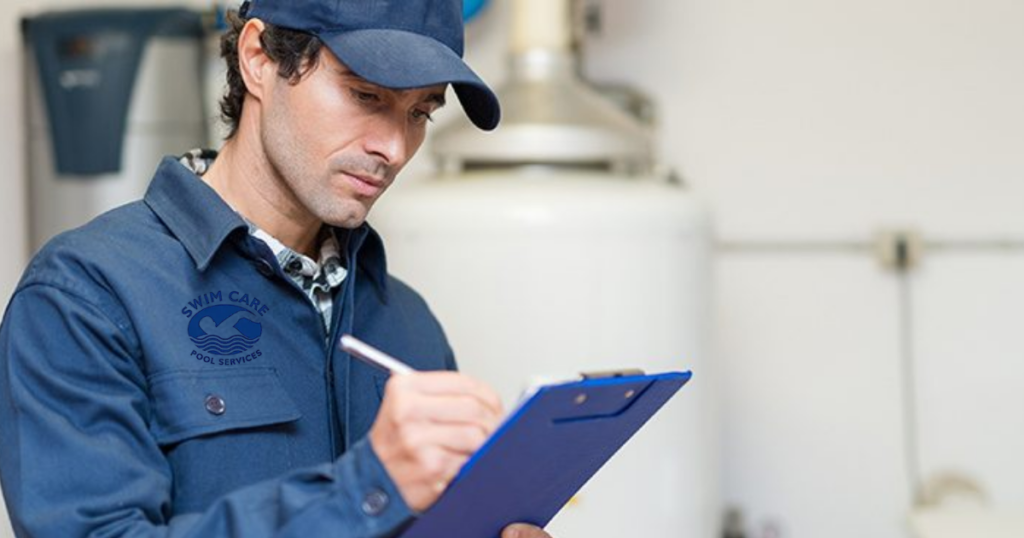
While DIY efforts are valuable, there comes a point where professional assistance is essential. This doesn’t underscore the importance of recognizing when to seek expert help. If DIY methods prove inconclusive, or if the severity of the slab leak surpasses your expertise, consulting with an experienced leak detection specialist in San Diego or a contractor becomes imperative.
Disregarding the need for professional assistance can lead to prolonged issues and inadequate solutions. Professionals bring specialized knowledge and equipment to accurately diagnose and address slab leaks. Knowing when to hand over the reins to experts ensures that your home receives the comprehensive care it needs, minimizing the risk of further complications.
13. Do Practice Preventive Maintenance:
Practicing preventive maintenance is a proactive approach to minimize the risk of slab leaks. This final do emphasizes the significance of regular checks, routine inspections, and timely repairs to keep your plumbing system in optimal condition. By staying ahead of potential issues, homeowners can avoid the disruptive and costly consequences of slab leaks.
Preventive maintenance involves addressing minor concerns before they escalate into major problems. This approach includes tasks such as fixing minor leaks, insulating pipes, and maintaining proper drainage. Cultivating a preventive mindset contributes to the long-term health of your plumbing system, reducing the likelihood of slab leaks and ensuring the sustained integrity of your home.
In summary, the combination of these do’s and don’ts forms a comprehensive guide for homeowners engaging in DIY slab leak detection. By following these guidelines, individuals can navigate the complexities of their plumbing systems with greater confidence, effectively identifying and addressing slab leaks before they become substantial challenges.
